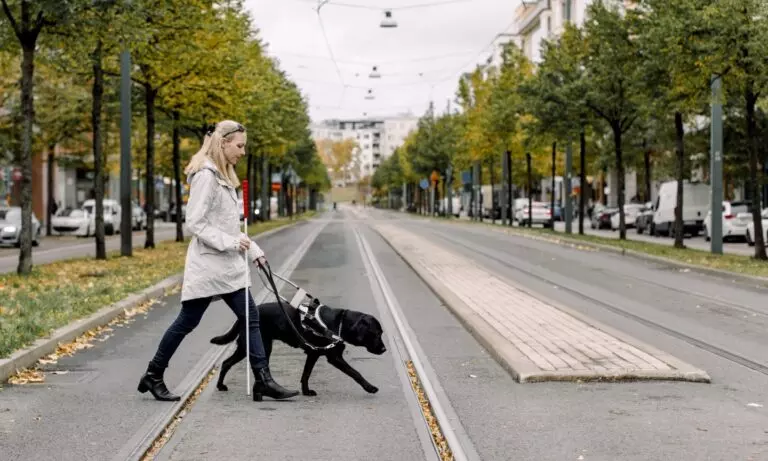Even if you are just traveling down the road, travel can be stressful. You can make it more difficult by adding an animal. You can add an animal to the mix. Many of us travel with our pets, but it can be more difficult to get along a service animal. I’m sure you know this: I spent four years traveling the world with my service dog. This has taught me a lot about the process.
Let’s discuss flying with a service pet, what you can expect and how to make it easier for you both.
1. Bring all paperwork
Did you know that there is no international service animal database? The United States does not have a license for service animals. This means that more people have access to service animals, but it can also mean that you will be scrutinized more, especially if your disability is invisible. There is no magic document that will declare your animal service-certified.
Traveling with a four-legged companion is going to be difficult without proper paperwork. Make sure you have all the necessary documents with you. You should also bring your U.S. Department of Agriculture certificate for service animals if you are traveling internationally. It also requires you to complete an attestation of training if you are flying.
You will need to show proof of training if you want to prove your service animal is legal. The American Kennel Club’s Canine Good Citizen test is a great place to start. If your animal was trained professionally, you should have a representative send a letter detailing the training methods and the name of the animal.
2. Choose the right vet
Which country are you going? You will need the USDA-approved health certificate, depending on where you are going. This certificate informs other countries that your animal has had all its shots up-to-date and is in good health overall.
Some veterinarians may not be able to fill out the health certificates. You will need to search for one that can. Your vet might be able fill them out by hand but the best ones can do these electronically.
A paper certificate is required to get a USDA endorsement within 10 days. This means that you will need to wait in line at an endorsing office or send your paperwork overnight to an eligible office. You’ll have to wait for the USDA to approve your paper or you could be left waiting in line at an endorsing facility.
Tip
Service animals traveling with humans are exempted from paying USDA-imposed fees for international health certificates.
Vets can now upload digital certificates to the USDA. This will eliminate days of waiting and save you money on shipping or gas. You should check that your country accepts these digital certificates before you travel.
3. Choose your country carefully
Yes, I would love to travel to Australia with my service dog. There are so many things to do in this beautiful country. However, I cannot fly to Europe with my dog and can land in Australia without any problems.
All animals, even service animals, must be isolated immediately upon arrival in Australia. This time period is 10 days for travel from the U.S. This is a long time to travel, and it can be stressful for service dogs to be separated from their handlers. It’s not a good idea.
4. Obtain a pet passport
Are you a frequent traveler to the European Union? You’re likely to have seen the rising cost of USDA health certificates. Instead of visiting the vet every few month, you might consider getting your service pet a pet passport when you next visit the EU.
These booklets are only issued by EU vets. They allow you to skip the need for health certificates when traveling to the EU. While there are some conditions that must be met, such as ensuring your pet is up-to-date with vaccinations, this can make travelling with your service animal much easier.
5. Regulations for research service animals
Service animals are covered by different laws in different countries. The Americans with Disabilities Act provides access to almost all areas of the United States, but not for the rest.
Although many countries have laws that allow service animals to be brought into their homes, others are out of date. This is the case in Europe, where airlines have been denying legitimate service animals on their flights.
You should do your research about service animal regulations wherever you are traveling. While you might be used to eating at a restaurant with your service pet, there may be restrictions abroad that limit your options for traveling with it.
6. Look into pet-friendly accommodation
Are you required to travel with your service dog in pet-friendly accommodation? Although this is not usually required, it may be necessary depending on international regulations. Traveling with a service dog can be difficult enough. Disputes can quickly escalate if your Airbnb host or hotel doesn’t know about service animal laws, or doesn’t believe that your animal is legal. It doesn’t matter if you are right or if you have the right, it can be exhausting.
You can make your life easier by booking pet-friendly accommodation. Your hosts will be more comfortable with pets because they are used to the hair, fur, and slobber. You won’t be caught unaware or upset.
To travel with your service dog
The service animal does a vital job. Their services can save lives, whether they are guiding blind people or alerting them to low blood sugar. Traveling with a service dog can be tiring, confusing, and difficult. There is not much literature to assist handlers. These six tips will make it easier for you and your rock star companion to take on your next trip.
Maximizing your Rewards
A travel credit card should be able to prioritize what is most important to you. These are our top picks for the best travel cards in 2023, as well as those that work best for:
